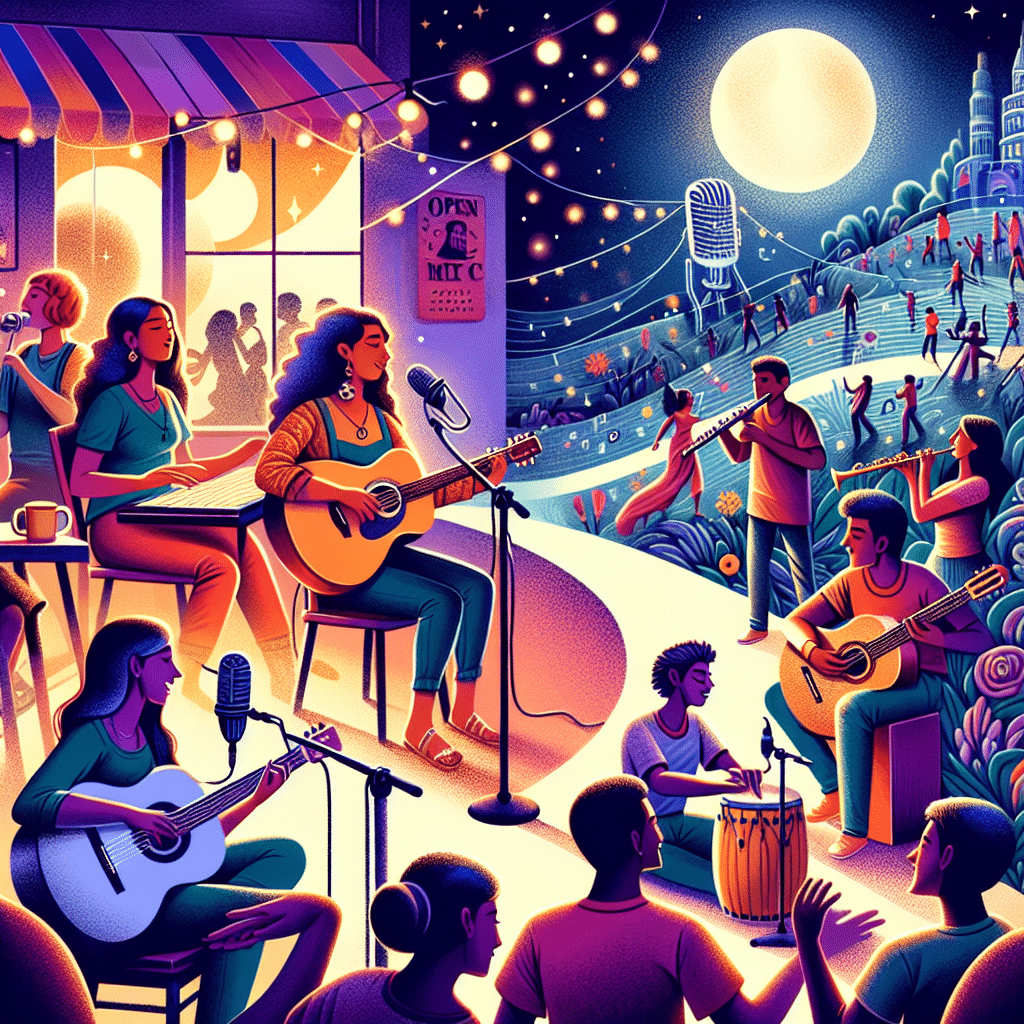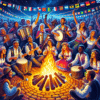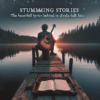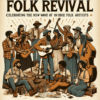From Coffee Shops to Festivals: The Journey of Indie Folk Musicians

The indie folk music genre has carved out a unique space in the soundscape of contemporary music. Known for its introspective lyrics, acoustic instrumentation, and a blend of traditional folk elements with modern sensibilities, the journey of indie folk musicians is often marked by grassroots beginnings in intimate settings. One of the most common pathways for these artists involves starting their careers in coffee shops, gradually building a dedicated following, and eventually performing at larger venues and festivals. This article explores this journey, highlighting the evolution of indie folk musicians and the significant cultural impact of their work.
The Roots of Indie Folk Music
Indie folk music draws heavily from traditional folk music while innovating with contemporary sounds. Often reflective, its themes resonate on personal and communal levels—love, loss, and the human experience. This genre thrives on authenticity, inviting listeners to connect with artists on a deeper emotional level.
Unsung Venues: The Coffee Shops
Coffee shops serve as the first stage for many indie folk musicians. These cozy, often intimate venues provide emerging artists a platform to share their music with a small audience, allowing them to refine their craft without the pressure of larger-scale performances.
Building a Community
Performing in these settings also fosters a sense of community. Musicians not only entertain patrons but engage with them, creating a communal experience woven through shared songs and stories. It is here that loyal fan bases are born—individuals become connected to musicians through their relatability and personal narratives.
Practical Benefits
See Also: Gather 'Round the Fire: The Cultural Impact of Folk Music Festivals
Gather 'Round the Fire: The Cultural Impact of Folk Music FestivalsFurthermore, coffee shops often have little to no cover charge, making live music accessible to everyone. This is crucial for indie artists hoping to expand their audience. The absence of significant financial expectations allows performers to breathe creativity into their performances and develop their sound without the immediate pressure to “sell out” venues.
The Process of Growth and Development
As indie folk musicians hone their skills and develop a unique sound, they often begin to explore more substantial performance opportunities. This transition typically involves playing at open mic nights, small bars, and regional events.
Recording and Distribution
An essential part of progressing is the ability to record and distribute music. Many indie folk artists turn to DIY methods to produce their first albums or EPs, using home recording equipment and online platforms like Bandcamp and SoundCloud for distribution. This autonomy allows musicians to maintain creative control over their work, connecting them with fans who appreciate their authenticity.
Social Media and Streaming Sites
With the digital age transforming the music industry, burgeoning artists leverage social media and streaming platforms for promotional purposes. Building a robust online presence can lead to an increase in followers and listeners, further amplifying their chances of landing larger gigs, sponsorships, and festival appearances.
Gaining Recognition
As they grow, some indie folk musicians catch the attention of music blogs, local radio stations, and even record labels. This stage marks the shift from aspiring to recognized artist. The impact of a blog write-up, or a song featured on a popular playlist can catapult a musician into wider recognition, opening doors to larger venues and festivals.
See Also: Top 10 Best Folk Songs of the 80s
Top 10 Best Folk Songs of the 80sThe Festival Circuit
As indie folk musicians gain traction, festivals become key milestones in their careers. Events like Coachella, Bonnaroo, and smaller festivals dedicated to folk music create platforms where these artists can reach thousands of listeners.
The Experience of Performing
Performing at festivals provides artists the unique opportunity to reach diverse audiences. Their music can touch listeners who may have otherwise never had the chance to experience their work. The energy, camaraderie, and vibrancy of a festival environment allow musicians to connect with their audience on a profound level, often leading to newfound fans.
Networking Opportunities
Additionally, festivals provide invaluable networking opportunities. Artists meet fellow musicians and industry professionals, collaborate, and sometimes even create friendships that influence their artistic direction. This sense of collecting different musical influences while networking serves to creatively enrich the indie folk scene.
The Importance of the Journey
The journey from coffee shops to festivals is more than a mere chronological development; it underscores several vital aspects.
See Also: The Rise of Indie Folk: How a Genre Redefined Acoustic Sounds
The Rise of Indie Folk: How a Genre Redefined Acoustic SoundsCommunity and Connecting with Audiences
Indie folk music is about connection, storytelling, and community. Starting in coffee shops allows artists to forge genuine relationships with their audience, setting the stage for how they will interact with larger crowds as their careers progress. This foundation emphasizes the importance of authenticity—a hallmark of the indie spirit.
Cultural Impact
The evolution of indie folk musicians reflects broader cultural changes and movements. Their music often comments on social issues, personal struggles, and cultural narratives, engaging listeners in meaningful dialogues while providing a soundtrack for shared experiences.
Sustainability and Independent Artistry
Lastly, the trajectory from intimate performances to grand festival stages promotes a sustainable model of artistry. Indie folk musicians embracing a direct-to-fan approach encourages the growth of independent music, shifting away from traditional commercial systems that have historically dominated the industry.
Conclusion
The journey from coffee shops to festival stages encapsulates the heart of indie folk music, celebrating the spirit of individual artistry and community connection. As these musicians navigate their paths, they exemplify the importance of authenticity, connection, and dedication to their craft. Their stories resonate with anyone who dreams of pursuing their artistic vision, encouraging a next generation of creators to start where they are—perhaps in a local café, singing for a handful of listeners, and dreaming of the day when they will play before the throngs at a music festival.
FAQs
See Also: Strumming Stories: The Heartfelt Lyrics Behind Indie Folk Hits
Strumming Stories: The Heartfelt Lyrics Behind Indie Folk HitsWhat defines indie folk music?
Indie folk music is characterized by its acoustic instrumentation, lyrical introspection, and a mix of traditional folk influences and contemporary sounds. It emphasizes personal storytelling and authenticity.
How do indie folk musicians start their careers?
Many indie folk musicians begin their careers by performing in small, intimate venues like coffee shops and open mic nights, connecting with local audiences and refining their craft.
What role do festivals play in a musician's career?
Festivals provide indie folk musicians a platform to reach wider audiences, promote their music, and network with other artists and industry professionals, often serving as a significant milestone in their career development.
How can aspiring indie folk musicians promote their music?
Aspiring musicians can leverage social media, streaming platforms, and local performances to promote their music. Engaging with fans directly and building a community around their work can significantly enhance their reach and recognition.
What is the significance of storytelling in indie folk music?
See Also: Folk Revival: Celebrating the New Wave of Indie Folk Artists
Folk Revival: Celebrating the New Wave of Indie Folk ArtistsStorytelling is central to indie folk music, with artists often sharing personal anecdotes and social commentaries through their lyrics. This approach fosters emotional connections with listeners and creates a shared cultural understanding.
If you want to know other articles similar to From Coffee Shops to Festivals: The Journey of Indie Folk Musicians you can visit the category Folk.
